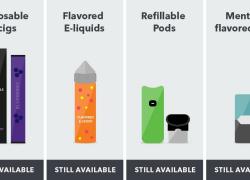Costs of Aging in Place are Emotional and Financial
(NewsUSA) - Many older adults would prefer to remain in their own homes as they age, but a lack of affordable options makes this plan a challenge for individuals and their families, according to results of a new survey of more than 1,700 caregivers and other respondents in two rural California counties.
- Many older adults would prefer to remain in their own homes as they age, but a lack of affordable options makes this plan a challenge for individuals and their families, according to results of a new survey of more than 1,700 caregivers and other respondents in two rural California counties.
Older individuals may find themselves burning through savings to stay at home, or forced to move to a nursing home or long-term-care facility if they can’t afford to hire home-care help, according to the survey. The survey was sponsored by Legacy Health Endowment, a California-based nonprofit healthcare grant-making foundation.
Often, adult children become caregivers, and they face financial and emotional hardships of their own. Nearly 80% of the survey respondents says that their caregiving responsibilities have affected their ability to pay their household expenses. Adult children may sacrifice saving for their own retirements, funding their children’s college education, or making down payments on a home to financially support and care for aging parents.
In these situations, “caregivers shoulder the burden of rearranging their schedules, juggling doctors’ visits and prescriptions, squeezing in regular shopping trips and performing essential housekeeping chores, all while caring for a spouse or aging parent,” explains Jeffrey Lewis, President and CEO of Legacy Health Endowment.
The burden is even heavier for women, says Lewis. “Women who leave the labor force early because of care-giving responsibilities cost themselves an average of $324,044 in lost salary and Social Security and pension contributions over their lifetimes,” he adds.
Other key survey results related to women caregivers include the following:
- Approximately 90% think services that allow seniors and those who are disabled to live where they prefer are important.
- Approximately 72% say that caregiving responsibilities have impacted their physical, mental, and emotional health.
- Approximately 60% report decreasing their work time because of caregiving responsibilities.
The survey also found overwhelming support from respondents for respite care for primary caregivers, who often face fatigue and burnout. More than 91% say they support programs that provide resources for their own mental health as well as resources to help with caregiving.
The survey was sponsored by Legacy Health Endowment and conducted by J. Wallin Opinion Research, and conducted in English and Spanish between March 25 and April 19, 2022, in Stanislaus and Merced counties. The data were collected by professional interviewers by calling cell phones and landline phones, as well as online interviews via text, e-mail and social media.
For full survey results,visit legacyhealthendowment.org.



 - Now that we’re halfway through 2022, it’s important that people with Medicare re-evaluate what is included in the Medicare Advantage health plans they selected to ensure they’re maximizing their coverage throughout the year.
- Now that we’re halfway through 2022, it’s important that people with Medicare re-evaluate what is included in the Medicare Advantage health plans they selected to ensure they’re maximizing their coverage throughout the year.
 - When was the last time you thought about the health of your nails? In fact, healthy nails are not only attractive, but they are also important to overall health.
- When was the last time you thought about the health of your nails? In fact, healthy nails are not only attractive, but they are also important to overall health. 
 - Sometimes an egregious wrong gets righted.
- Sometimes an egregious wrong gets righted.  -
-  “Grocery Girl”
“Grocery Girl” “Bed of Rose and Thorns”
“Bed of Rose and Thorns” “Diet for Great Sex: Food for Male and Female Sexual Health”
“Diet for Great Sex: Food for Male and Female Sexual Health” “Gut Feelings: The Patient’s Story”
“Gut Feelings: The Patient’s Story”
 - In a landmark Memorandum of Understanding (MOU) signed on May 17, 2022, by Mitch Carmichael, the Secretary of State for Economic Development of West Virginia, and Yong Soo Jun, Chairman of UNDBIO, Inc. the State of West Virginia agreed to provide fiscal, tax, and other incentives to promote UNDBIO’s production of insulin in West Virginia. Secretary Carmichael also pledged to work with state, county, and local officials to promote UNDBIO’s insulin production.
- In a landmark Memorandum of Understanding (MOU) signed on May 17, 2022, by Mitch Carmichael, the Secretary of State for Economic Development of West Virginia, and Yong Soo Jun, Chairman of UNDBIO, Inc. the State of West Virginia agreed to provide fiscal, tax, and other incentives to promote UNDBIO’s production of insulin in West Virginia. Secretary Carmichael also pledged to work with state, county, and local officials to promote UNDBIO’s insulin production.  - The pandemic created a major shift in the way people consume - and, more importantly, trust - information, especially as it relates to vaginal health. In fact, a
- The pandemic created a major shift in the way people consume - and, more importantly, trust - information, especially as it relates to vaginal health. In fact, a 
 - Pregnant or planning a pregnancy? It's time to think about your blood pressure, even if you've never had
- Pregnant or planning a pregnancy? It's time to think about your blood pressure, even if you've never had 
 - ¿Está embarazada o planeando un embarazo? Es hora de pensar en su presión arterial, incluso si nunca ha tenido
- ¿Está embarazada o planeando un embarazo? Es hora de pensar en su presión arterial, incluso si nunca ha tenido 





